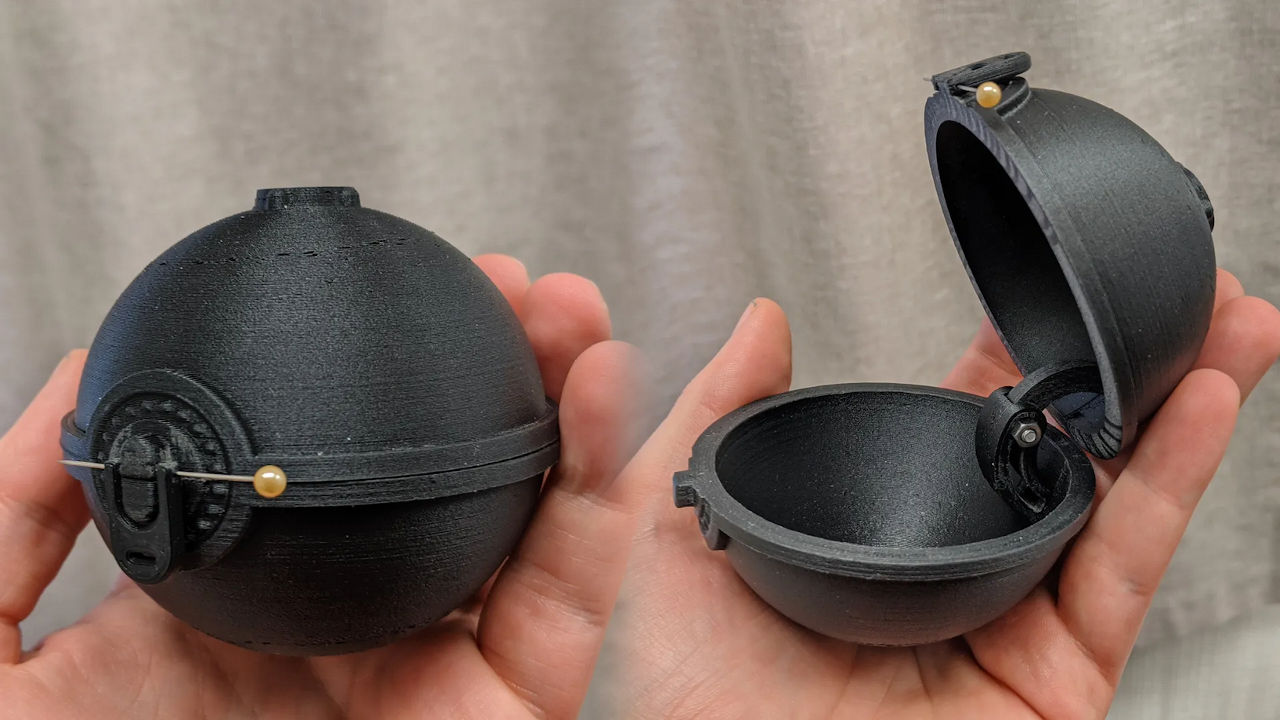
3D Printed Hinges: Useful Models You Can Print


At 3DSourced we’ve covered everything 3D printing and 3D since 2017. Our team has interviewed the most innovative 3D printing experts, tested and reviewed more than 20 of the most popular 3D printers and 3D scanners to give our honest recommendations, and written more than 500 3D printing guides over the last 5 years.
Just like the wheel, hinges are an ancient and simple invention that’s quite literally opened many doors, allowing for all kinds of engineering advancements that simply couldn’t function without angular movement. And so, knowing how to 3D print hinges is a valuable skill if you plan on making anything more complicated than a simple statue.
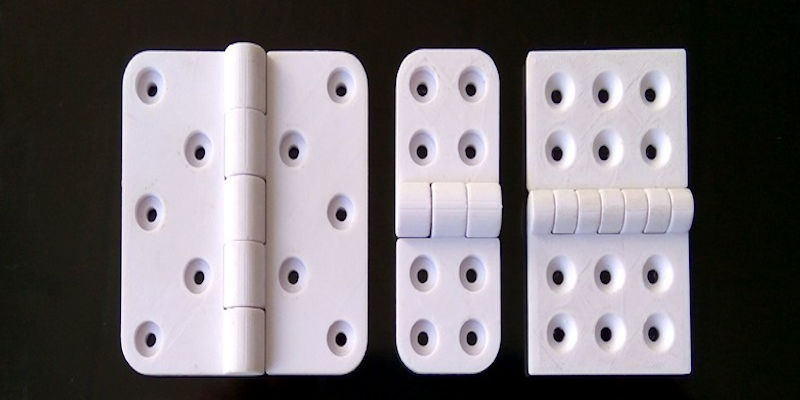
3D printed hinges, just like any moving parts, need to be made with care. Everything from measurement to assembly needs to be carried out cautiously to ensure the hinges and joints work and move as they should without sticking or falling apart.
Here we’ll look at how to 3D print hinges as well as a few cool examples of hinged 3D printed projects and devices. By the end of this article, you’ll be able to get to making your moving pieces with confidence and secure knowledge needed to get these deceptively complex joints right.
Can You 3D Print a Hinge?
Yes. With enough care and precision, anyone can 3D print hinges either for repair or as part of a larger project. This is ideal because, if done right, 3D printed hinges both massively increases your options for what you can 3D print, as well as helping you cut costs and save time making household repairs to things like doors and cupboards.
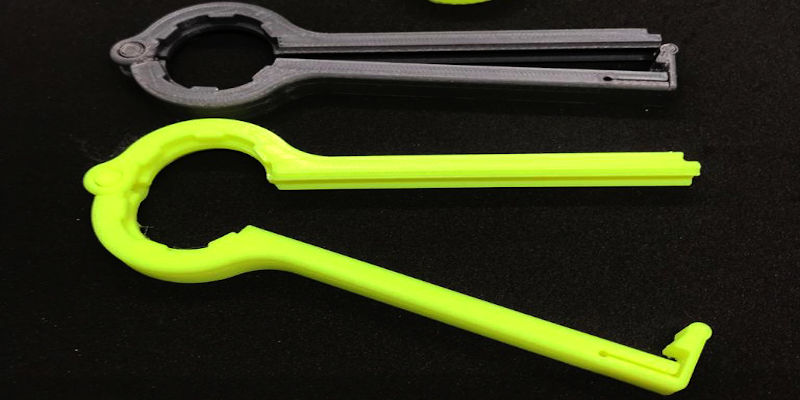
However, 3D printing a hinge isn’t necessarily a simple feat, and there are a few things you need to keep in mind when making one.
How Do You 3D Print Hinges? Hints and Tips
Despite their simple nature, hinges are very important parts in doors and machinery that can be frustrating and even dangerous if not printed correctly. Because of this, you should keep these hints and tips in mind before you get started or before you attach your 3D printed hinges to anything.
Learn About Different Hinges
Generally speaking, if you’ve downloaded a file for a 3D printed gadget that includes hinged parts, then the designer has already selected the right kind of hinge to suit the purpose.
However, if you’re making a standalone hinge for an outside purpose, then it’s important to make sure you’re using the right kind of hinge for the job.
To give you an idea of just how many different kinds of hinges there are, here are just a few of the most common ones:
- Butt Hinges – Also known as parametric hinges, these are the most common type of hinge found on most doors and normally designed to be fixed in place and unmovable.
- Ball Bearing Hinges – Like butt hinges but reinforced to support more weight, often used for heavier doors and windows.
- Spring-Loaded Butt Hinges – Complex hinges used to automatically close thresholds. Commonly used in fire doors and main building entrances and exits.
- Barrel Hinges – Smaller hinges commonly used in lightweight cabinet doors.
- Overlay Hinges: Slightly more complex hinges used for aesthetic purposes to open cabinet doors wide but also ensuring they close efficiently enough to be flat against their surface.
- Concealed Hinges – Designed to be hidden from view for aesthetic purposes. Normally used in fold-out furniture.
- Offset Hinges – A slightly L-shaped hinge that folds in on itself to create more of an opening in a doorframe when open and sealed shut when closed.
- Piano Hinges – Longer, thinner hinges seen on pianos, toy chests, and other storage means.
- Reversible Hinges – More articulated hinge types used in batwing doors, cat flaps, etc.
Just like selecting the right kind of screws or tools for the job, knowing what kind of hinge you need and ensuring you use could be the difference between a successful print and a complete failure.
Measure and Re-Measure
Hinges, like any mechanical part, need to be as accurate as possible to work efficiently and safely. An improperly measured hinge will grind against itself and soon break, which is dangerous if used on something like an overhead cupboard or a door.
To avoid such dangers, it’s important to always double-check your measurements and test your hinges thoroughly before putting them to use. This can be done in your CAD software if it features the ability to actively simulate moving parts.

Even after printing, you should test the hinge practically. This can be done simply with your hands, moving the hinge open and closed and making sure it stays sturdy through use and doesn’t bump or grind against itself.
Ensuring your printer’s dimensional accuracy is equally important for such precise parts, and you can find out how to shore it up in our detailed guide here.
Make Sure Your Filament Is In Good Condition
Not only do 3D printer filaments have a shelf life, they’re also vulnerable to the elements, mainly airborne moisture.
If your filament has absorbed too much of this moisture, it will become wet and less reliable. If you don’t catch one of the many problems this can cause, then you’ll end up with a weaker hinge that could prove unsafe in application.
Be Mindful of What Filament You’re Using
Not only can damaged or wet filament be detrimental to your project, the filament you’re using should also be strong enough to support whatever structure you’re building.
Filaments like PLA may not be strong enough to handle doors or particularly heavy cupboards, so you should consider switching to a tougher filament like Nylon to maximize safety and reliability.

Making sure you’re using the right filament for the job is good advice regardless of what you’re printing.
To further improve the strength of your 3D printed hinge, make sure you’re printing with as high an infill percentage as your printer will allow. This will use more filament and take longer, but it’s a good way to shore up your hinge’s strength and reduce the risk of failure.
What Kinds of Hinges Can You 3D Print?
Now that you know what to keep in mind when 3D printing your hinges, you’re ready to get started making them.
While we’ve already discussed the different kinds of hinges out there, not all of them will be immediately useful to you. So here are a few examples of hinges you can 3D print and what they’re ideally used for.
Bag Clip
- Where to Download: Cults3D
- Designer: MAUROPETRELLI
- Price: ~$0.60
- Used For: Securing bags
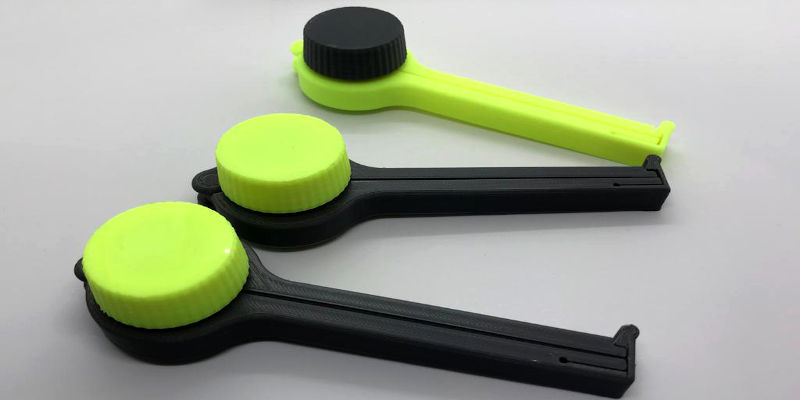
Bag clips are one of the easiest kinds of hinge you can print and are a great starting point if you’re new to printing pieces that need to be precise. Even if they fail, the only consequence will be a little wasted filament and maybe some less-than-fresh potato chips.
The bag clip hinge is mainly used to help preserve the contents of an otherwise unsealed bag. This makes it ideal for perishables like unfinished snacks, bag lunches, and pet treats.
As a hinge that functions as a device on its own, the bag clip is the perfect 3D printed hinge for anyone who wants an easy trial run that, if successful, is still quite useful to have around the house.
Parametric Hinge
- Where to Download: Thingiverse
- Designer: rohingosling
- Price: Free
- Used For: Standard doors and window openings
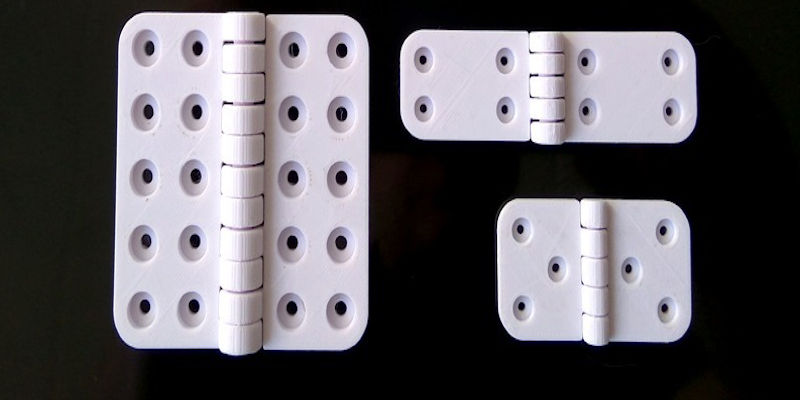
The parametric hinge is a 3D printed version of the butt hinge we’ve covered above. As one of the most common hinge types, it’s primarily used for relatively lightweight thresholds like doors and windows.
While there are too many hinge STL files to count, I’ve gone for this one because it features a wide variety of different shapes and sizes for free.
There are also detailed instructions if you need to repurpose the standard butt hinge to incorporate pins and reinforcements for heavier doors and compartments, each with their own guidelines and extra hardware to get exactly the kind of hinge you need.
The designer has recommended strong filament like TPU if you’re going to use this 3D printed hinge for household repairs or any other purpose that combines 3D printed parts with already exiting pieces.
The Perfect Hinge
- Where to Download: Printables
- Designer: JMAW
- Price: Free
- Used For: Any project or repair that requires a strong and sturdy hinge
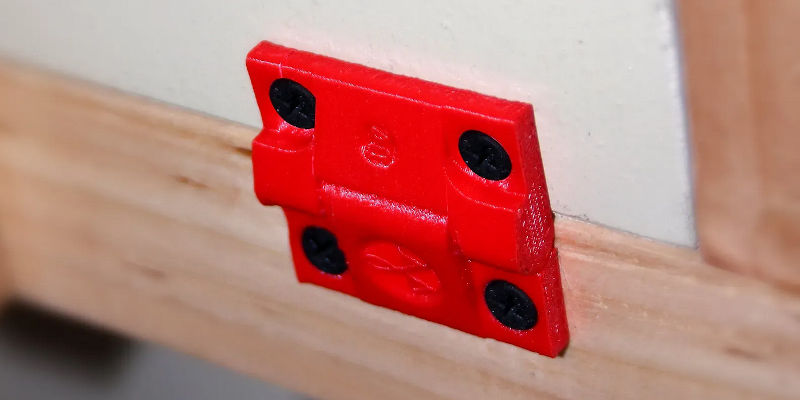
A great 3D printed hinge that lives up to its name is the perfect hinge. Designed to be fully 3D printed, meaning it needs no extra hardware, it’s also been specifically created to be a sturdy and reliable hinge for any kind of repair or project that needs a multi-purpose joint that won’t break easily.
Despite this strength, the designer still warns against overestimating their creation, which is good advice to follow in general. No 3D printed hinge will be as strong as a professionally made metal one, especially not a hinge that’s fully 3D printed like this one, and uses no metal reinforcements as standard.
Simply put, this is a great and versatile hinge to 3D print, but always seek out a metal hinge if you need to build or repair anything particularly heavy or important.
Strong Modular Hinge
- Where to Download: Printables
- Designer: JCW
- Price: Free
- Used For: Lids and surfaces the need to be detachable
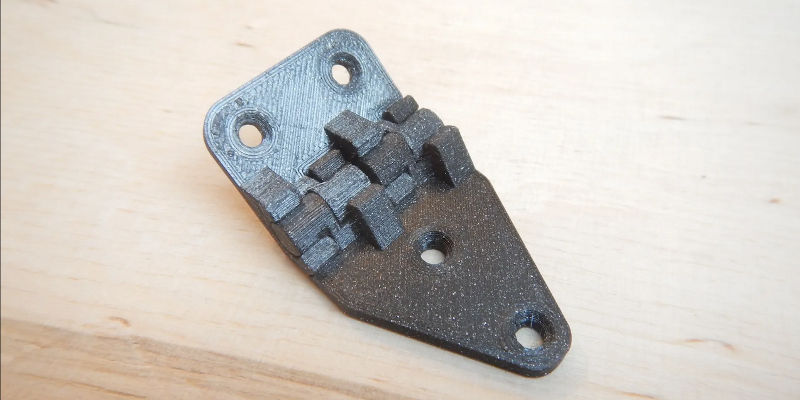
Redesigned from a slimmer but weaker version, this modular hinge is a simple joint used in lids like ashtrays or toy chests or anything else that benefits from having a lid that can be easily removed simply by moving it laterally.
The two separate pieces of this 3D printed hinge lock together and, if printed correctly, stay attached so long as their only moved in an open-close motion.
Despite the parts being separate, the fact that they’re designed to link means you won’t need any glue or other adhesive to make sure they lock into place and stay that way.
Reversible Hinge
- Where to Download: Thingiverse
- Designer: wd73_
- Price: Free
- Used For: Doors designed to open wide in both directions

Unlike standard hinges, reversible hinges can rotate completely in two directions, allowing for a much more liberal movement axis the likes of which is applied to batwing doors and cat flaps.
This 3D printed hinge is one such type, and has been updated from a previous design to include screw holes for easy attachment to anything that requires movement in two different directions.
Sliding Hinge:
- Where to Download: Printables
- Designer: kohkoh
- Price: Free
- Used For: Fridge and Freezer Doors

Fridge and freezer drawers are different from standard thresholds. Because they need to avoid gaps between the door and frame, even when closed, they require lateral movement as opposed to the rotary movement most types of door hinges allow for.
If you find your fridge or freezer door has become worn or broken and are looking to repair it yourself, be sure to for this sliding hinge which is designed specifically for such a fix.
The sideways motion with which this 3D printed hinge moves is ideal for making sure there aren’t any open spaces in your fridge door. This will not only save you on your electric bill, but will prevent your food from spoiling and help keep your refrigerator running as it should.
Uses for 3D Printed Hinges
Now that you understand how to 3D print your own hinges, and what kinds are readily available, it’s time to look at some examples of cool projects that you can make that use 3D printed hinges to their full potential.
This is by no means an exhaustive list, it’s just a few of my personal favorite uses for 3D printed hinges to give you an idea of what kinds of things you can make once you’ve mastered them.
So don’t be afraid to let your imagination run wild with other great hinged 3D prints.
Folding Chess Board
- Where to Download: Printables
- Designer: Bugman_140
- Price: Free

The age-old game of chess is still as popular today as it ever was, and there are plenty of different spins on 3D printing your own set that are fun and varied takes on the ancient favorite.
One such variant is this foldable chess board that makes it easier to store and transport around. Not only is it a stylish look that includes well-laid out instructions, it’s also a very practical use for a 3D printed hinge that isn’t too strenuous on the joint.
Articulated Hand
- Where to Download: Cults3D
- Designer: NOP21
- Price: Free

3D printed hinges aren’t just simple mechanisms for opening and closing doors, they can also be applied in different forms to make some truly unique prints.
This articulated hand is a great example of how 3D printed joints and hinges can come together in a cool and creative way. As the stop-motion GIFs in the link above will show you, this hand can move in many different directions and be posed however you like thanks to the ingenious use of 3D printed hinges to create a fun desktop ornament.

This isn’t a simple print, but it does make for an excellent project for anyone looking to go beyond standard hinges and hinged projects and make something a little more unique.
Pokéballs
- Where to Download: Printables
- Designer: Duker
- Price: Free
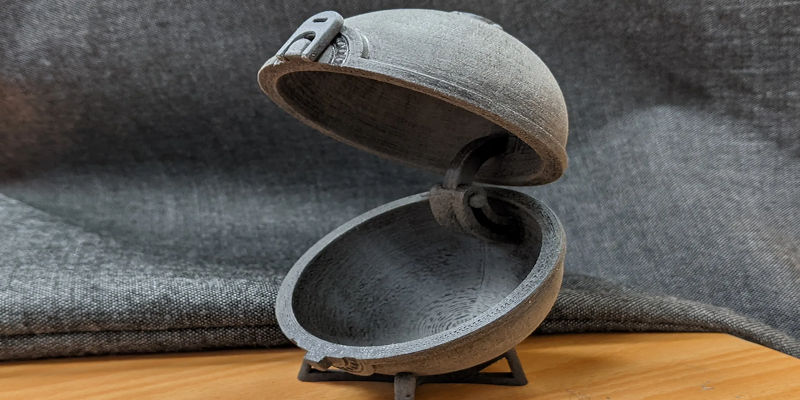
3D printed hinges can be used to make capsules and storage boxes in many shapes and sizes, and my personal favorite is – of course – the Pokéball.
While I’ve already discussed some of the coolest 3D printed hinged Pokéballs before, I’ve decided to include this Ancient Pokéball from 2022’s Pokémon Legends: Arceus simply because it didn’t exist when I wrote about them and I felt it deserved to be mentioned here.
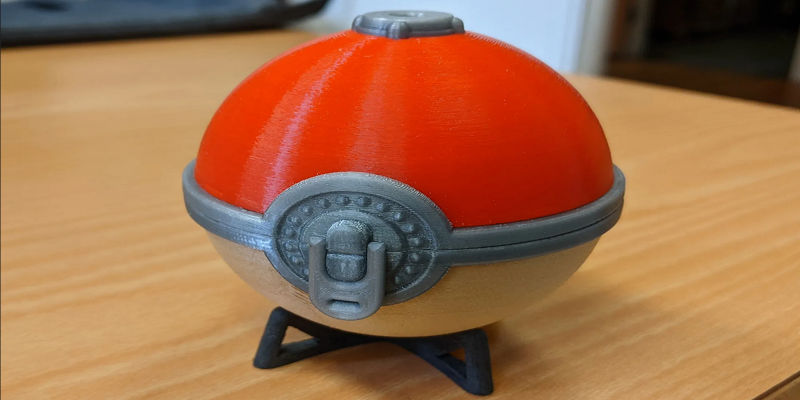
It’s a fascinating design that’s well worth anyone who wants a relatively easy use for a 3D printed hinge who also happens to be a Pokémon fan.
Related Articles:




















